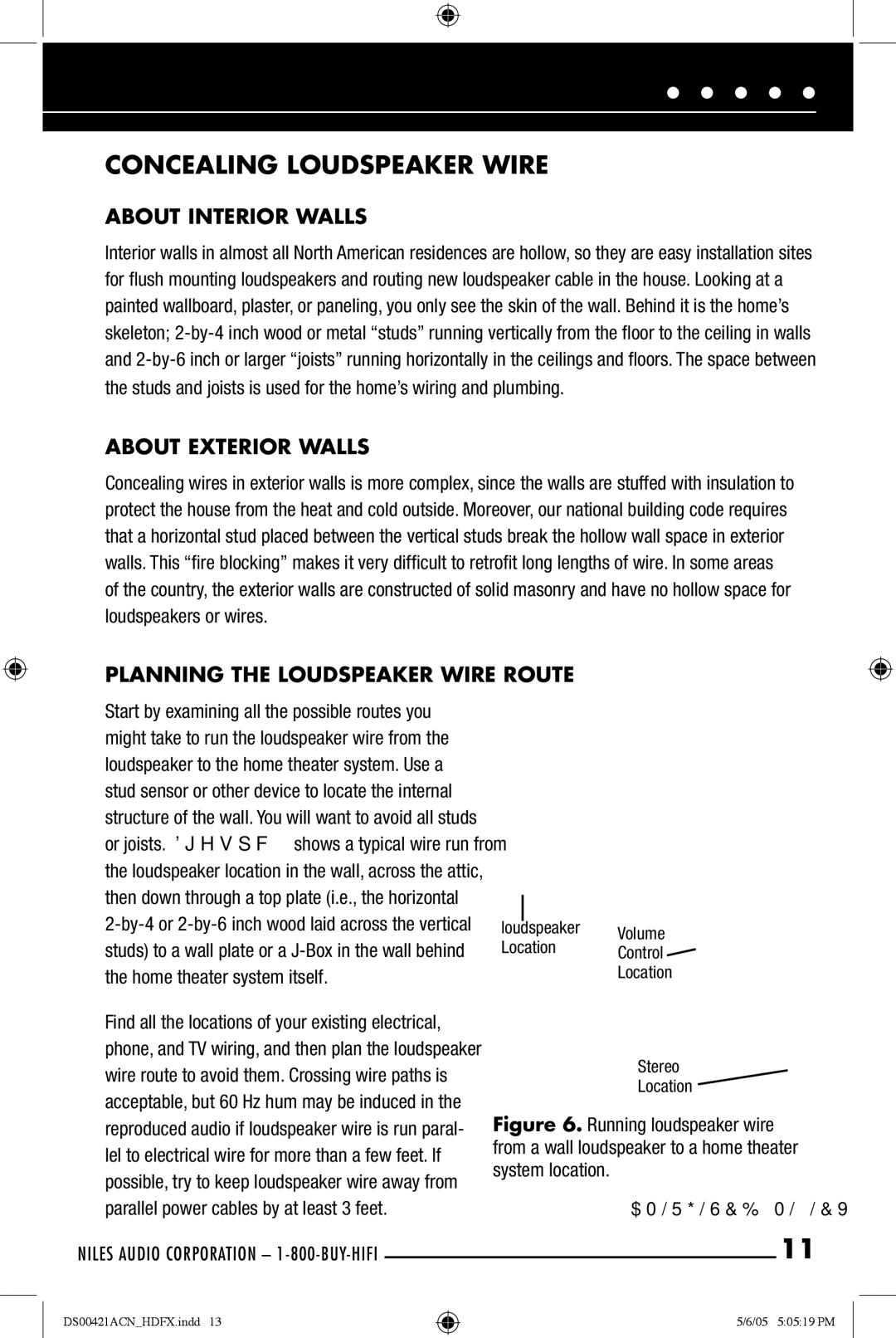
CONCEALING LOUDSPEAKER WIRE
ABOUT INTERIOR WALLS
Interior walls in almost all North American residences are hollow, so they are easy installation sites for flush mounting loudspeakers and routing new loudspeaker cable in the house. Looking at a painted wallboard, plaster, or paneling, you only see the skin of the wall. Behind it is the home’s skeleton;
ABOUT EXTERIOR WALLS
Concealing wires in exterior walls is more complex, since the walls are stuffed with insulation to protect the house from the heat and cold outside. Moreover, our national building code requires that a horizontal stud placed between the vertical studs break the hollow wall space in exterior walls. This “fire blocking” makes it very difficult to retrofit long lengths of wire. In some areas of the country, the exterior walls are constructed of solid masonry and have no hollow space for loudspeakers or wires.
PLANNING THE LOUDSPEAKER WIRE ROUTE
Start by examining all the possible routes you might take to run the loudspeaker wire from the loudspeaker to the home theater system. Use a stud sensor or other device to locate the internal structure of the wall. You will want to avoid all studs or joists. Figure 6 shows a typical wire run from the loudspeaker location in the wall, across the attic, then down through a top plate (i.e., the horizontal
Find all the locations of your existing electrical, phone, and TV wiring, and then plan the loudspeaker wire route to avoid them. Crossing wire paths is acceptable, but 60 Hz hum may be induced in the reproduced audio if loudspeaker wire is run paral- lel to electrical wire for more than a few feet. If possible, try to keep loudspeaker wire away from parallel power cables by at least 3 feet.
NILES AUDIO CORPORATION –
loudspeaker Volume
Location Control ![]() Location
Location
Stereo
Location
Figure 6. Running loudspeaker wire from a wall loudspeaker to a home theater system location.
(CONTINUED ON NEXT PAGE)
11
DS00421ACN_HDFX.indd 13
5/6/05 5:05:19 PM
